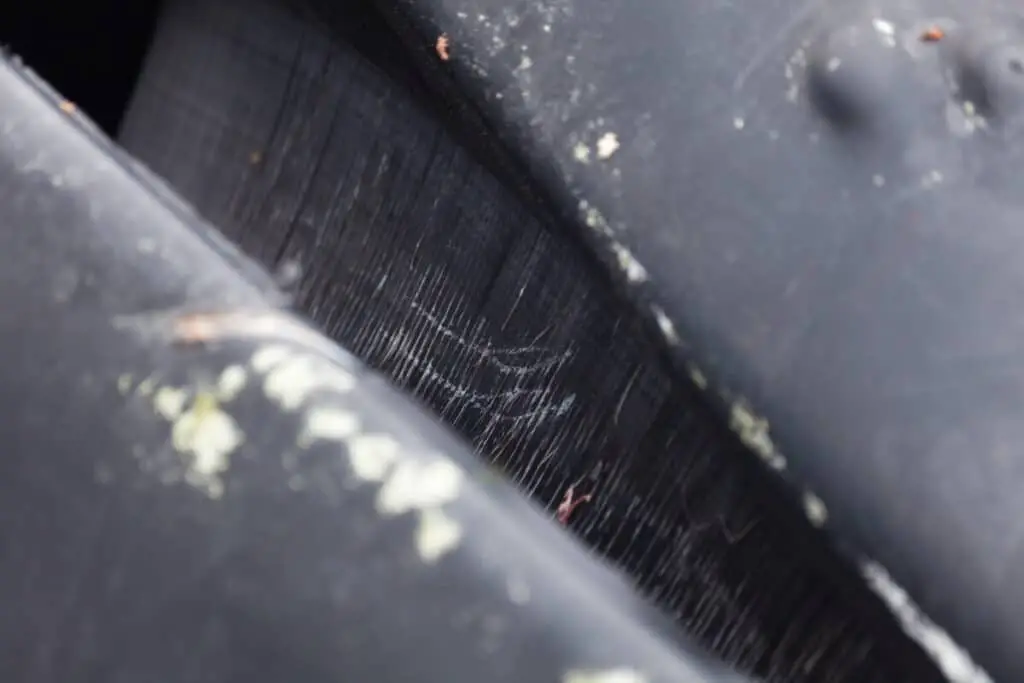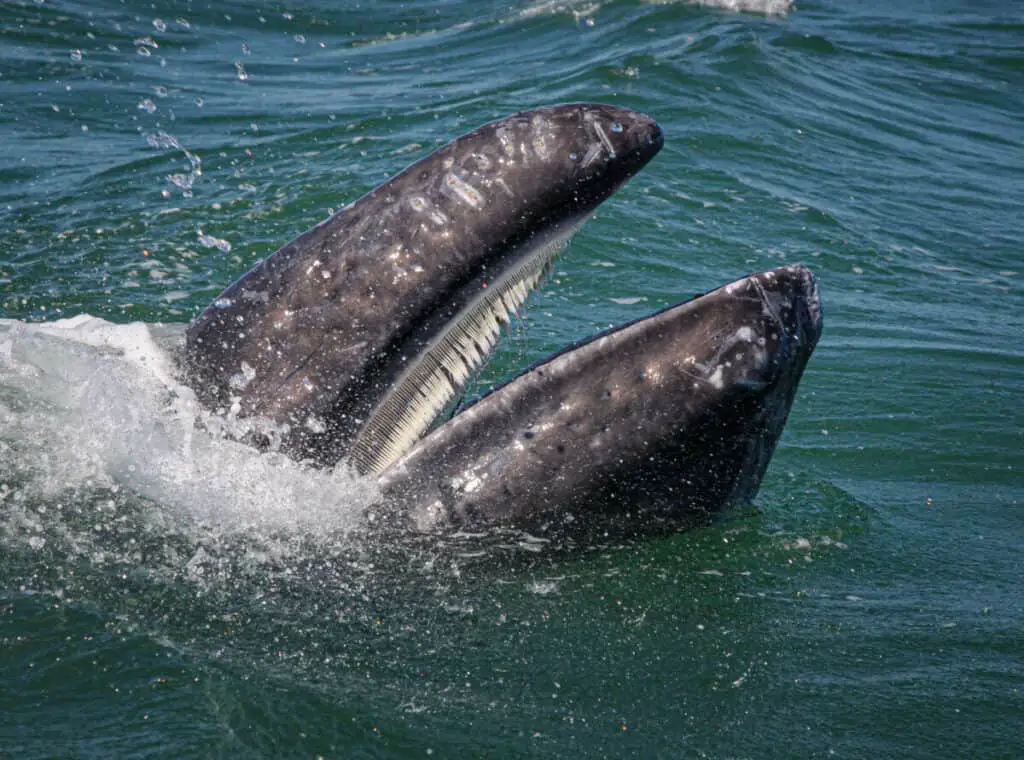Baleen whales are a diverse group of marine mammals that belong to the suborder Mysticeti. These majestic creatures occupy all the world’s oceans and have evolved unique adaptations for feeding on small aquatic organisms, including krill and plankton.
There are 15 species of baleen whale currently recognized by scientists, ranging in size from the pygmy right whale, which measures only about 21 feet long, to the blue whale, which is the largest animal ever known to exist.
Despite their immense size and iconic status as some of our planet’s most magnificent animals, much remains unknown about baleen whales. Their elusive nature makes it difficult for researchers to study them up close or even estimate their numbers accurately in certain regions.
However, through decades of research efforts using various technologies such as acoustic monitoring devices and satellite tagging systems, we continue to learn more about these fascinating creatures’ behaviors and ecological roles in maintaining healthy ocean ecosystems.
This article aims to provide an overview of what we know so far about baleen whales while highlighting ongoing research efforts aimed at filling knowledge gaps surrounding this important group of marine mammals.

Evolutionary History Of Baleen Whales
The evolutionary history of baleen whales can be traced back to their ancestors, the archaeocetes. Archaeocetes were a group of extinct marine mammals that lived during the Eocene epoch around 50 million years ago. Fossil records suggest that they were fully aquatic and had elongated bodies with four limbs adapted for swimming.
The evolution of these early cetaceans is believed to have taken place over millions of years in response to changes in oceanic conditions. Genetic evidence has revealed that baleen whales diverged from toothed whales approximately 30 million years ago. This divergence was marked by several adaptations including the development of baleen plates that replaced teeth as the primary means of filter feeding.
Baleen whale species diversified rapidly during the middle Miocene period, which lasted from about 14 to 10 million years ago; this diversification gave rise to various modern-day baleen whale lineages such as humpbacks, blue whales, gray whales, and minke whales amongst others. As scientists continue to study fossil records and genetic data, we may gain further insights into how these majestic creatures evolved and adapted over time.
Species of Whales
| Baleen Whale Species | Habitat and Geographic Range |
|---|---|
| Blue Whale | Oceans worldwide, including the North Atlantic, North Pacific, Southern Ocean, and the Indian Ocean |
| Humpback Whale | Oceans worldwide, including the North Atlantic, North Pacific, Southern Ocean, and the Indian Ocean |
| Fin Whale | Oceans worldwide, including the North Atlantic, North Pacific, Southern Ocean, and the Indian Ocean |
| Minke Whale | Oceans worldwide, including the North Atlantic, North Pacific, Southern Ocean, and the Indian Ocean |
| Gray Whale | Eastern North Pacific population migrates between feeding grounds in Alaska and breeding grounds in Baja California, Mexico; Western North Pacific population migrates between Russia and Korea |
| Bowhead Whale | Arctic and subarctic waters, primarily found in the Arctic Ocean and adjacent seas |
| Bryde’s Whale | Tropical and subtropical waters, including the Atlantic, Pacific, and Indian Oceans |
| Right Whale | North Atlantic and North Pacific populations, including areas such as the Bay of Fundy, Cape Cod Bay, and the Gulf of Maine |
| Sei Whale | Oceans worldwide, including the North Atlantic, North Pacific, Southern Ocean, and the Indian Ocean |
| Gray’s Beaked Whale | Deep waters of the North Atlantic Ocean and adjacent seas |
Please note that this table provides a general overview, and the ranges and habitats of each baleen whale species can be more extensive and may overlap in some cases.
Physical Characteristics And Adaptations
During their evolutionary history, baleen whales evolved from terrestrial mammals to fully aquatic creatures with unique physical and physiological adaptations. These adaptations allowed them to thrive in the oceanic environment where they feed on krill, plankton, and other small organisms using their baleen plates.
However, beyond their physical features, these marine giants also have interesting behavioral habits that are essential for survival. One of the most fascinating aspects of baleen whale behavior is their vocalizations and communication methods.
Baleen whales produce a variety of sounds ranging from low-frequency moans to high-pitched whistles and clicks. These sounds serve different purposes such as navigation, locating prey, mating calls, warning signals or socializing within groups. For instance, humpback whales are known for producing complex songs during mating season while blue whales emit loud and long-lasting low-frequency calls that can travel over thousands of kilometers through water.
By analyzing these vocalizations, researchers can gain insights into population distribution, migration patterns, and even individual identification. Overall, understanding the behavioral habits of baleen whales is crucial not only for scientific research but also for conservation efforts aimed at protecting these magnificent creatures in their natural habitat.
Baleen Whales: Unveiling Their Predators
Feeding Strategies And Ecology
Baleen whales are known for their unique feeding strategy, filter feeding. They use their baleen plates to strain the water in search of small prey such as krill, plankton, and small fish. The process involves opening their mouths wide while swimming at a slow speed and taking in a large volume of water that is then filtered through the baleen plates. The food particles get trapped while the water flows back out.
Krill consumption is an important aspect of the diet of many species of baleen whales. These tiny crustaceans form dense swarms in cold waters where they feed on phytoplankton. Baleen whales have been observed consuming up to 4 tons of krill per day during peak feeding season!
In addition to krill, some species also consume larger prey like copepods, shrimp, squid, and other small fish depending on availability. Baleen whales play a crucial role in oceanic ecosystems by maintaining ecological balance through controlling populations of these smaller organisms.
Migration And Breeding Patterns
Feeding strategies and ecology are crucial aspects of baleen whale behavior. These massive marine mammals rely on filtering large quantities of water to consume small invertebrates such as krill, plankton, and small fish. Baleen whales have adapted unique feeding techniques to ensure their survival.
For instance, humpback whales use a method known as bubble netting where they blow bubbles underwater that create a wall around the prey, forcing them into one area before lunging upwards with open mouths.
Breeding locations and migration routes play an essential role in baleen whale life cycles. The breeding grounds for most species of baleen whales are located in tropical or sub-tropical waters during winter months. Humpback whales migrate from polar areas towards warmer waters near the equator to mate and give birth to young calves. On the other hand, gray whales travel southward along the Pacific coast of North America every year from Alaska’s Bering Sea to breed off Mexico’s Baja Peninsula.
Understanding these migratory patterns is crucial for conservation efforts aimed at protecting these gentle giants’ habitats while ensuring their long-term survival.
Threats To Baleen Whale Populations
Baleen whales, as with many other marine species, are facing numerous human impacts.
As a result of overfishing and hunting practices in the past, baleen whale populations were significantly reduced.
Although commercial whaling has been banned since 1986 by the International Whaling Commission (IWC), illegal hunting still occurs today.
Moreover, climate change is another significant threat to these magnificent creatures.
The increase in water temperatures and ocean acidity levels negatively affects their food sources which can lead to starvation.
Climate change also causes shifts in migration patterns which may affect breeding success rates for some baleen whale species.
Noise pollution from shipping activities can impact communication between individuals and disrupt feeding behavior which can lead to malnutrition.
Plastic debris ingestion is yet another issue that poses a threat to these animals; they may accidentally ingest this plastic while feeding on plankton or krill, leading to serious health problems or even death.
To ensure the survival of baleen whale populations, effective conservation measures must be implemented urgently.
Reducing greenhouse gas emissions and addressing climate change should be prioritized alongside regulation and enforcement efforts against illegal hunting practices.
Additionally, preventing plastic waste from entering oceans through appropriate management strategies and reducing noise pollution could help protect these majestic mammals’ habitats and contribute towards securing healthy ecosystem function now and into the future.

Conservation Efforts And Future Outlook
Effective conservation efforts are crucial for the long-term survival of baleen whales. Collaborative research among scientists, government agencies, and conservation organizations is necessary to promote understanding about these species’ biology, ecology, behavior, and threats they face in their natural habitats.
This knowledge can guide policy decisions aimed at reducing human impacts on whale populations such as noise pollution from boats or shipping traffic that disrupts communication and feeding behaviors. Additionally, political policies need to be implemented to regulate commercial whaling activities across all nations.
While some progress has been made in recent years through the International Whaling Commission (IWC) moratorium on commercial whaling since 1986, several countries continue to ignore this ban by exploiting legal loopholes or conducting scientific whaling programs.
In addition to hunting pressure, other factors like climate change and plastic pollution also pose significant risks to baleen whales’ survival. Despite challenges ahead, there remains hope for a brighter future if we work towards sustainable practices that balance economic development with environmental protection.
Three key points for successful conservation efforts:
- Collaboration between stakeholders involved in research and policymaking
- Strong enforcement of existing regulations against illegal whaling
- Implementation of new measures addressing emerging threats such as climate change and plastic pollution
- Conservation education programs to increase public awareness and engagement
Conclusion
Baleen whales, the filter-feeding giants of the ocean, have a long evolutionary history dating back over 30 million years.
These majestic creatures possess unique physical adaptations that allow them to thrive in their aquatic environment.
Their feeding strategies are efficient and effective, allowing them to consume massive amounts of tiny krill or plankton each day.
Despite their size and strength, baleen whales face numerous threats from human activities such as whaling, pollution, and climate change.
Fortunately, there are conservation efforts underway to protect these magnificent creatures and help ensure their future survival.
While it is important to recognize the challenges faced by baleen whale populations, we must remain optimistic about their future prospects.
As the saying goes, ‘where there’s life, there’s hope.’
By working together to address these challenges head-on, we can continue to safeguard these gentle giants for generations to come.
